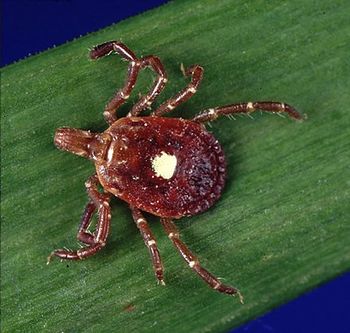
CDC Findings Suggest "Rare Transmission" of Zika Virus in Patient
The CDC offers further insight into the investigation of a Zika virus infection in a family member of the first Zika-related death in the continental United States.
In 2016, a
In the synopsis, the authors report that 6 days after the index patient died, the patient’s family member, who authors refer to as “patient A,” developed “subjective fever, rash, and conjunctivitis.” Patient A had no known risk factors for the virus; he did not report traveling to an area endemic with Zika, having had any sexual contact with an individual who has traveled to an endemic area, nor did he receive any organ transplants or blood transfusions. However, the authors note that the patient was in close contact with the index patient “during his period of viremia,” and had visited the index patient’s places of residence. A urine sample collected from patient A tested positive for Zika virus.
The researchers put their efforts into finding a source of infection for patient A by identifying and surveying other family contacts, healthcare personnel, and community members who had potential contact with the index patient. They defined ‘contact’ as “a person who resided in the same household with the index patient or who had direct contact with the index patient or his blood or other body fluids.” The researchers tested blood, and sometimes urine, samples of those they contacted for Zika virus.
The researchers found that a total of 22 family members and friends had potential interaction with the index patient; of those 22 individuals, 19 met the definition of “contact.” Furthermore, of those 19 individuals, 15 lived with or visited the index patient at his residences and 13 visited him while he was hospitalized. In addition, 18 of the 19 individuals tested negative for Zika virus; only patient A tested positive. Twelve mortuary workers also interacted with the patient and met the definition of “contact;” however, all 12 workers tested negative for the virus.
Patient A “reported staying for 2 days and nights (>48 hours) in [the index patient’s] room in the intensive care unit (ICU) and reported hugging, kissing, and touching him frequently.” However, the index patient’s wife reported more “frequent and direct contact” with the index patient than patient A.
In terms of healthcare professionals, a total of 132 had potential contact with the index patient; of those professionals, 98 were available to be interviewed. Of the 98 professionals, 86 reported “contact” with the index patient. All 86 healthcare workers provided blood samples to be tested for Zika virus, and all the samples tested negative for the virus.
In addition, local mosquito abatement districts worked closely with the CDC to “conduct larval and adult mosquito surveillance in the 3 areas where the index patient (2 residences) and patient A resided.” This surveillance consisted of conducting household surveys and deploying traps (light, CO2, gravid, BioGent) to collect mosquitoes at sites by the residences.
The authors reported that all of the larvae and pupae collected at the 3 residences and nearby sites found only Culex and Culiseta mosquito species. They also “failed to detect viable mosquito eggs,” and when reviewing the mosquitoes collected from the traps, the researchers “failed to detect the invasive species.”
According to the report, 226 households were within 200 miles of the 3 residences. Of those households, 89 had 1 resident or more completed the survey the CDC deployed; the rest were either unavailable, refused to take the survey, or “were unable to be interviewed in their native language.” Of the households that participated, 218 individuals answered questionnaires; of the 218 individuals, 124 gave a blood sample, 6 gave blood and urine samples, and 2 provided only urine samples. Of all the samples, 2 blood samples tested positive for Zika. However, they “were not confirmed by plaque reduction neutralization test (these samples were negative for Zika virus and dengue virus neutralizing antibodies).”
According to the report, the index patient was a unique case, not only because he died from the infection, but because he had a viral load that was about 100,000 times higher than average levels. Taking this into account, as well as the findings yielded from their investigation, the researchers concluded it is “likely that the index patient was the source of infection for patient A,” although they were unable to sequence virus obtained from patient A, and thus, they could not provide a “definitive confirmation.” However, the authors feel that these findings suggest that patient A’s infection “represents a rare transmission event through unknown, but likely, person-to-person mechanisms.”
Newsletter
Stay ahead of emerging infectious disease threats with expert insights and breaking research. Subscribe now to get updates delivered straight to your inbox.




























































































































































































































































































